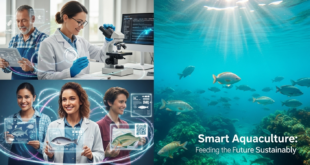Claytronics is an abstract concept that exists at the intersection of nanotechnology, computer science and robotics. It is concerned with the development of autonomous robots, the size of a few nanometres. These nano-robots, called Claytronic atoms or catoms, can interact with each other to form three dimensional, dynamic objects that cannot only be seen and heard but also touched and felt.
Seth Goldstein and his team at Carnegie Mellon envision millions of cooperating robot modules, each perhaps no bigger than a dust grain, together mimicking the look and feel of just about anything.
Creation of claytronics technology is the bold objective of collaborative research between Carnegie Mellon and Intel, which combines nano-robotics and large-scale computing to create synthetic reality, a revolutionary, 3-dimensional display of information. The vision behind this research is to provide users with tangible forms of electronic information that express the appearance and actions of original sources.
Scientists at Carnegie Mellon University in collaboration with others at Intel Research Pittsburgh are implementing programmable matter using building units that include tiny micro robots called claytronics atoms, or ‘catoms’, which can move, stick together, communicate, and compute their location in relation to others. They behave like atoms in the sense that they become the basic building blocks of the objects they are programmed to form. A group at Cornell also developed a self-replicating reconfigurable robotic system.
The objects created from programmable matter will be scalable to life size or larger. They will be likewise reducible in scale. Such objects will be capable of continuous, 3-D motion. Representations in programmable matter will offer to the end-user an experience that is indistinguishable from reality. Claytronic representations will seem so real that users will experience the impression that they are dealing with the original object.
Claytronic emulation of the function, behavior and appearance of individuals, organisms and objects will fully mimic reality – and fulfill a well-known criterion for artificial intelligence formulated by the visionary mathematician and computer science pioneer Alan Turing.
Recently, the team used photolithography to build cylindrical catoms about a millimeter in diameter, which can receive power, communicate, and adhere. These tiny catoms can’t yet move, but they will soon, Goldstein promises.
Potential Applications
Goldstein envisions applications like injectable surgical instruments, morphable cellphones, and 3-D interactive life-size TV and says they are just the tip of the iceberg.
Rajat Sharma [Ref: claytronicatom. blog spot. com/2011/10/claytronics-ppt.html ] in his blog discusses some exciting potential applications. Quoted below are some examples that he has given:
Human replicas could serve as stand-ins for medical personnel, firefighters, or disaster relief workers. Objects made of programmable matter could be used to perform hazardous work and could morph into different shapes to serve multiple purposes. A fire hose could become a shovel, a ladder could be transformed into a stretcher.
A football game or other sporting event could be replicated in miniature on your coffee table. A movie could be recreated in your living room, and you could insert yourself into the role of one of the actors.
Physical models to replace 3D computer models, which can only be viewed in two dimensions and must be accessed through a keyboard and mouse. Thus, using claytronics, you could reshape or resize a model car or home with your hands, as if you were working with modelling clay.
Dick Pelletier [Ref: http://ieet.org/index.php/IEET/more/pelletier20120714 ] gives even more exotic futuristic applications:
o programmable clothing which if you are at risk would become stronger than steel, while still maintaining its light weight, being impermeable to bullets and knives, and affording cushion-like protective cover in the event of auto accidents.
o walls in our homes that light up with a radiant glow upon command, and likewise doors and windows being commanded to shift to different walls.
o copying people on both ends of a phone call – mimicking the exact looks and movements of the person being replicated. At each end of the line, a real person is interacting with a replica. A step beyond Skype- instead of merely viewing each other
on a screen, you can touch, kiss, or hug, as if you are physically together. This realistic sense to communication (aural, visual and physical) over long distance is called pario.
Challenges
As can be appreciated, the creation of such technology that will represent information in dynamic, life-like 3-D forms is extremely challenging and complex. The Carnegie Mellon Intel Claytronics Research Project has set its sights on two principal pathways to advance this technology, namely:
Engineering design and testing of modular robotic catom prototypes that will be suitable for manufacturing in mass quantities
Creation of programming languages and software algorithms to control ensembles of millions of catoms As of 2006 researchers have already created a prototype catom that is 44 mm in diameter. The goal is to eventually produce catoms that are one or two mm in diameter-small enough to produce convincing replicas.
Each catom is a self-contained structure that has a receiver or antenna, a central processing unit (CPU), a power supply, one or more sensors, a video display, a means of locomotion, and a mechanism for adhering to other catoms. The idea is not to recreate an object’s chemical composition, but rather to create a physical artefact that will mimic the shape, movement, visual appearance, sound, and tactile qualities of the original object. One needs simply to work with the model without going anywhere near a computer. As one manipulates the model, it would be modified at every other location where the same model is being handled by multi-users. The objects created from programmable matter will be scalable to life size or larger or even reducible in scale. Such objects will be capable of continuous, 3-D motion.
Besides developing robots that move in all possible directions, researchers want to simplify the manufacturing process. They also aim to create catoms capable of emitting light of varying colours and intensities. A critical issue being faced by those working on the claytronics projects is that the size of the batteries required to power the miniature robots is larger than the robots themselves.
To work out this issue, researchers are engaged in developing charging techniques that allow for the charging of catoms by means of inter-catom contact, with a single battery being connected to an entire mass of catoms. Special nanometre fibres are also being developed to serve as connectors for catoms, which might solve the problem of weak adhesion between individual nano-robots.
Programming Languages
The key challenge is not in manufacturing the circuits but in programming the massively distributed system that will result from putting all the units together, says Goldstein. Rather than drawing up a global blueprint, the researchers hope to use a set of local rules, whereby each catom needs to know only the positions of its immediate neighbors. Properly programmed, the ensemble will then find the right configuration through an emergent process.
Some living organisms seem to work this way. The single-celled slime mold Dictyostelium discoideum, for example, aggregates into a multicellular body when under duress, without any central brain to plan its dramatic transformation or subsequent coordinated movements.
For catoms to do that, they must first be able to communicate with one another, if not also with a distant controller. The Carnegie Mellon researchers are now exploring electrostatic nearest-neighbor sensing and radio technologies for remote control.
To provide for efficient communication between catoms in a claytronics object, the researchers and engineers have developed two completely new programming languages: Meld and Locally Distributed Predicates (LDP).
Meld
Meld is used to describe the behaviour of an entire claytronic object, creating a layer of abstraction between the programmer and the working components.
Meld is developed for vigorously programming huge composites. It gives the programmers an ensemble-centric perspective, where programs are written for whole rather than individual entities. It is then compiled into discreet programs for the nodes that construct the whole. So the programmer need not have any apprehensions about the intricacies of programming a distributed system and can lay his emphasis on the logic (Michael P. Ashley-Rollman et al, July, 2009), (Daniel Dewey, September, 2008).
LDP
LDP, on the other hand, allows the programmer to check for specific issues in the object or a part of the object, even down to the level of a single catom. Besides these, a good implementation of claytronics requires advanced precision engineering to produce the catoms.
Locally Distributed Predicates (LDP) is used for distributed programming and uses pattern-matching methods (Rosa et al, 2008). With LDP, programmers can state the distributed state configurations. This can be done on the basis of the groupings of the state found on connected subgroups of catoms. The runtime of LDP will perfunctorily perceive incidences of these distributed configurations, and activate actions stipulated by the user in rejoinder to the perceived event
The future of Claytronics
Aerospace scientist and best-selling author Wil McCarthy, in a presentation in Las Vegas Futurists group, discussed the many possible benefits of claytronics, which he believes could one day “touch on nearly every aspect of our lives, from clothing to transportation to communications to housing.”
The ability to ‘program’ the world around us will influence everything that is important to the human experience; especially our safety and well being, McCarthy said
References and Resources also include:
https://qrius.com/claytronics-next-tech-revolution/
http://www.qiup.edu.my/download/weekly_digest/vice-chancellor/Week19.pdf
 International Defense Security & Technology Your trusted Source for News, Research and Analysis
International Defense Security & Technology Your trusted Source for News, Research and Analysis



